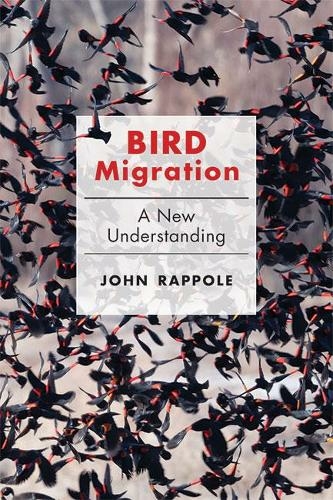Bird Migration: A New Understanding

- Bird Migration: A New Understanding by John Rappole (Johns Hopkins University Press, 2022)
- 344 pages, photos, illustrations and maps.
- ISBN: 9781421442389. Pbk, £29.
Some look at bird migration as representing the exodus of birds of a northern origin to the south after breeding – and, in fact, much research on migration has been performed under such an assumption.
Some ornithologists take issue with this concept. Perhaps the most prominent of these is John Rappole, who has published many papers and exhaustively explored his hypotheses in a previous book, The Avian Migrant (2013). However, Bird Migration: A New Understanding is a more accessible, populist summary of his work. While there is no lack of scientific discussion, it's written in a more anecdotal style, with literary references and plenty of behind-the-scenes stories accumulated during a lifetime of research.
Rappole's model is that migration is the seasonal movement from the place of a bird species' origin to a breeding location, then the return once food sources begin to dwindle. In the context of Nearctic and Neotropical birds, he is a proponent of the 'southern home theory' (as opposed to the more generally assumed 'northern home theory'). He breaks down the annual migration cycle into five seasons: the Breeding Period, Postbreeding Period, Fall Transient Period, Wintering Period and Spring Transient Period, taking into account avian biology and behaviour and treating and researching each period in its own right. Essentially, he says, everyone else has been looking at migration the wrong way around.
The fact that birds face the adaptational dilemma of disappearing for months on end to southern climates where their ecological niches are already filled by the sedentary locals is the paradox addressed in the book and the author does this engagingly. Their northward dispersals are primarily motivated by food and sex, but when seasons change after those desires are satisfied, migratory birds must find other richer habitats further south to sustain themselves. Working out how and why is one of the holy grails of migration research.
While weather, day length and genetics traditionally play the greatest roles in driving migration, Rappole makes the argument for the importance of more immediate drivers such as food and nest sites. He also places the female bird more at the centre of the breeding cycle, removing another assumption, perhaps originally borne out of prejudice. Rappole presents his arguments convincingly but his theory remains at odds with some of the ideas of other ornithologists, who subscribe to Migratory Syndrome theory, where the information on how to return to a bird's ancestral home is programmed into its DNA. These theoretical and personal disagreements are also presented in the book – but generally with good humour rather than rancour.
The book is worth reading alone for an alternative perspective on migration. However, it's also written in a conversational style and filled with a rich number of stories and plenty of understandable research that is relevant to all the world's birds – not just those found in America. And it's likely that all these different hypotheses have a lot to offer in our understanding of the mysteries of annual mass bird movements.


